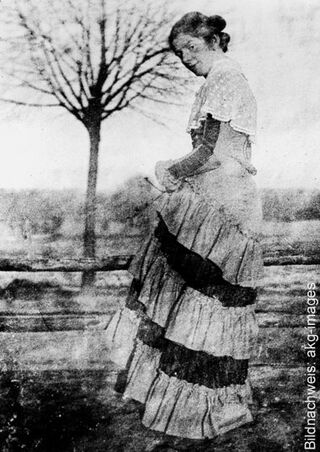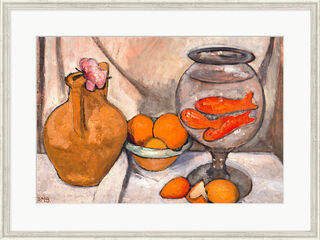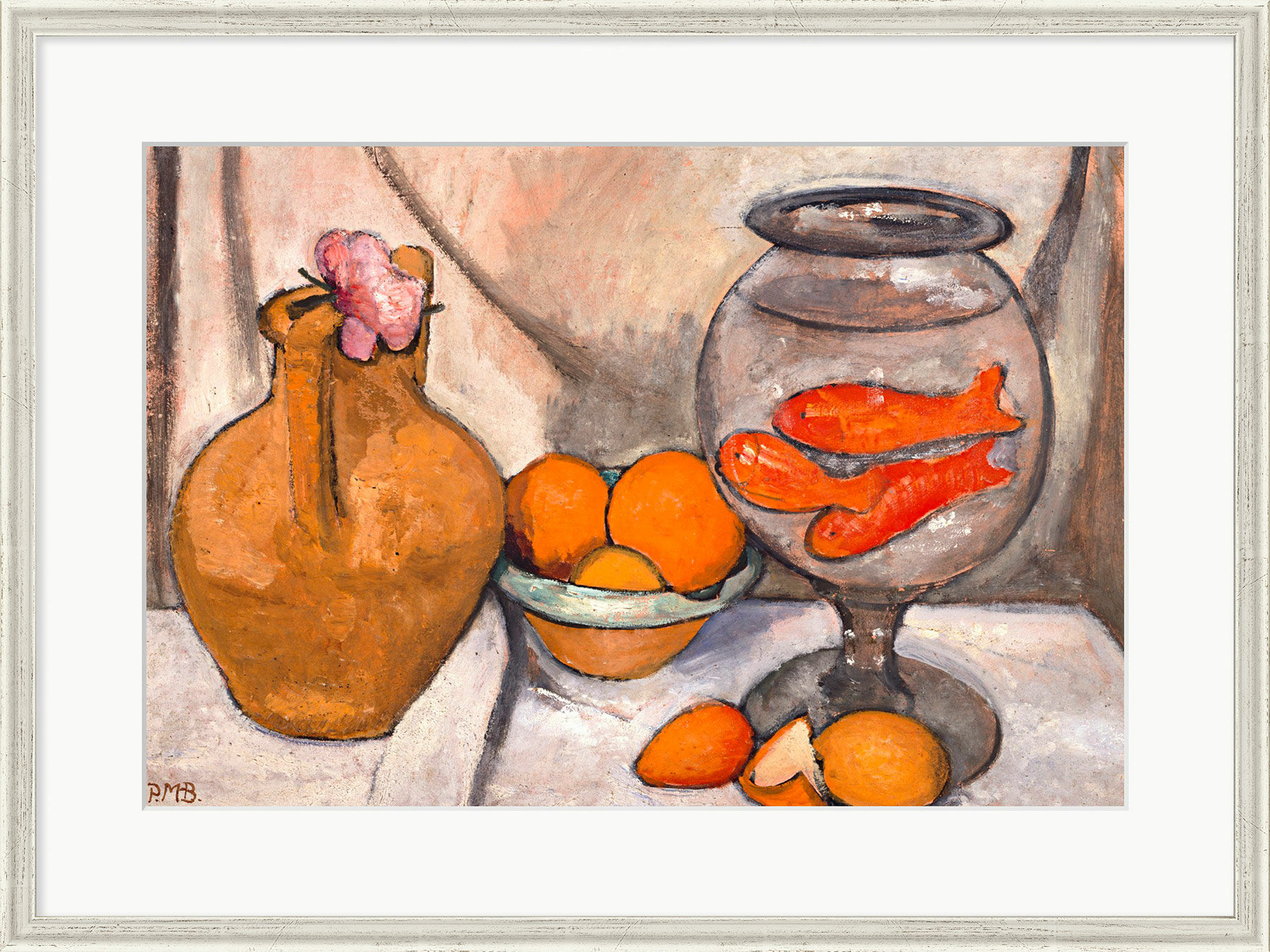Picture "Still Life with Goldfish Bowl" (1906), framed


Picture "Still Life with Goldfish Bowl" (1906), framed
Quick info
limited, 500 copies | reproduction on cardboard | framed | passe-partout | glazed | size 70.5 x 94 cm (h/w)
Detailed description
Picture "Still Life with Goldfish Bowl" (1906), framed
Original: 1906, oil on cardboard, 50.5 x 74 cm, Von der Heydt Museum, Wuppertal.
Detailed art reproduction in a gridless, frequency-modulated process on an art board. Limited world edition 500 copies. © Von der Heydt-Museum, Wuppertal © 2007 DACO-VERLAG, Stuttgart. Framed in a solid wood frame with passe-partout, dustproof glazed. Size 70.5 x 94 cm (h/w).

About Paula Modersohn-Becker
1876-1907
Only after her early death Paula Modersohn-Becker was recognised as a pioneer of modernism who artistically anticipated much of what others were just beginning to do. The painter repeatedly tried out new ways of making colour, shape and surface independent and thus enhancing the expression of her pictures.
At the turn of the century, she created numerous portraits as well as studies of moorland and birch landscapes. These were either Impressionist or Expressionist in style and showed her preference for a strictly reduced composition and her renunciation of depth illusionism. Ultimately, she was always concerned with revealing the secret poetry of things behind their outward appearance. She summarised this artistic goal with the phrase "The thing itself in the mood".
To mark the 100th anniversary of the death of the great German painter, major exhibitions were held at the Lower Saxony State Museum in Hanover, the Kunsthalle Bremen and the Böttcherstraße Art Collections in Bremen.
The style of Impressionism, which emerged in French painting around 1870, owes its name to Claude Monet's landscape 'Impression, Soleil Levant'. After initial rejection, it began a veritable triumphal procession.
Painters such as Claude Monet, Edgar Degas, Edouard Manet, Auguste Renoir and others created motifs from everyday life, urban and landscape scenes in bright, natural light.
Impressionism can be seen as a reaction to academic painting. The emphasis was not on content with its strict rules of painting structure, but on the object as it appears at any given moment, in an often random cut out. The reality was seen in all its variety of colours in natural lighting. The Studio painting was replaced by open-air painting.
Through the brightening of the palette and the dissolution of firm contours, a new approach to colour emerged. In many cases, the colours were no longer mixed on the palette but side by side on the canvas so that the final impression lies in the eye of the viewer with a certain distance. In "Pointillism", (with painters such as Georges Seurat or Paul Signac) this principle was taken to the extreme.
Outside France, Impressionism was taken up by painters such as Max Slevogt, Max Liebermann and Lovis Corinth in Germany, and by James A. M. Whistler in the United States.
However, Impressionism was only expressed to a limited extent in the art of sculpture. In the works of Auguste Rodin, who is considered one of the main representatives, a dissolution of surfaces is evident, in which the play of light and shadow is included in the artistic expression. Degas and Renoir created sculptures as well.


